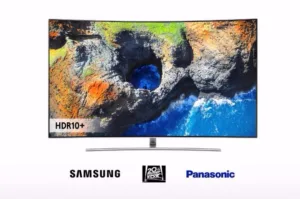20th Century Fox, Panasonic Corp. and Samsung Electronics announced a new partnership to create an open, royalty-free dynamic metadata platform for High Dynamic Range (HDR) through an associated certification and logo program, tentatively called HDR10+. Together, the three companies will form a licensing entity that will begin licensing the HDR10+ platform in January 2018. The entity will license the metadata broadly to content companies, ultra-high definition TVs, Blu-ray disc players/recorders and set-top box manufacturers, as well as SoC vendors, royalty-free with only a nominal administrative fee.
There are several key benefits for partners who wish to adopt the platform for their HDR10+ compliant products, the companies claim. HDR10+ is said to offer system flexibility, allowing a variety of partners, including content creators, content distributors, TV manufacturers and device makers, to incorporate this platform and improve the viewing experience for audiences. The HDR10+ platform was designed to allow for future development and innovation in order to deliver a more powerful technology in the years to come.
Yuki Kusumi, Executive Officer at Panasonic said,
“By offering considerable HDR picture quality improvements across a wider range of TVs while accelerating the amount of premium HDR content available, we expect HDR10+ to quickly become the defacto HDR format.”
Analyst Comment
Our own Chris Chinnock was used by Samsung to moderate a training day that included a talk by Samsung on HDR10+ and at IFA I heard good reports of that session (unfortunately schedule clashes meant I couldn’t attend). HDR10+ is really a counter to Dolby Vision which, like HDR10 and HDR10+ is based on the PQ curve. Both Dolby Vision and HDR10+ use dynamic metadata to optimise performance, while HDR10 uses static metadata (set once for a programme or system). The key difference between HDR10+ and Dolby Vision for many brands will be the fact that the HDR10+ scheme will be royalty free, unlike Dolby’s technology. On the other hand, Dolby helps TV makers to tune their sets to get optimum performance, which will help some to get better results out of their sets than they could achieve on their own. I assume HDR10+ will be adopted as a SMPTE standard.
Samsung has been talking about HDR10+ for a while, but getting Panasonic on board was an important step. I would be surprised if they are not quickly joined by plenty of other device makers, (BR)

